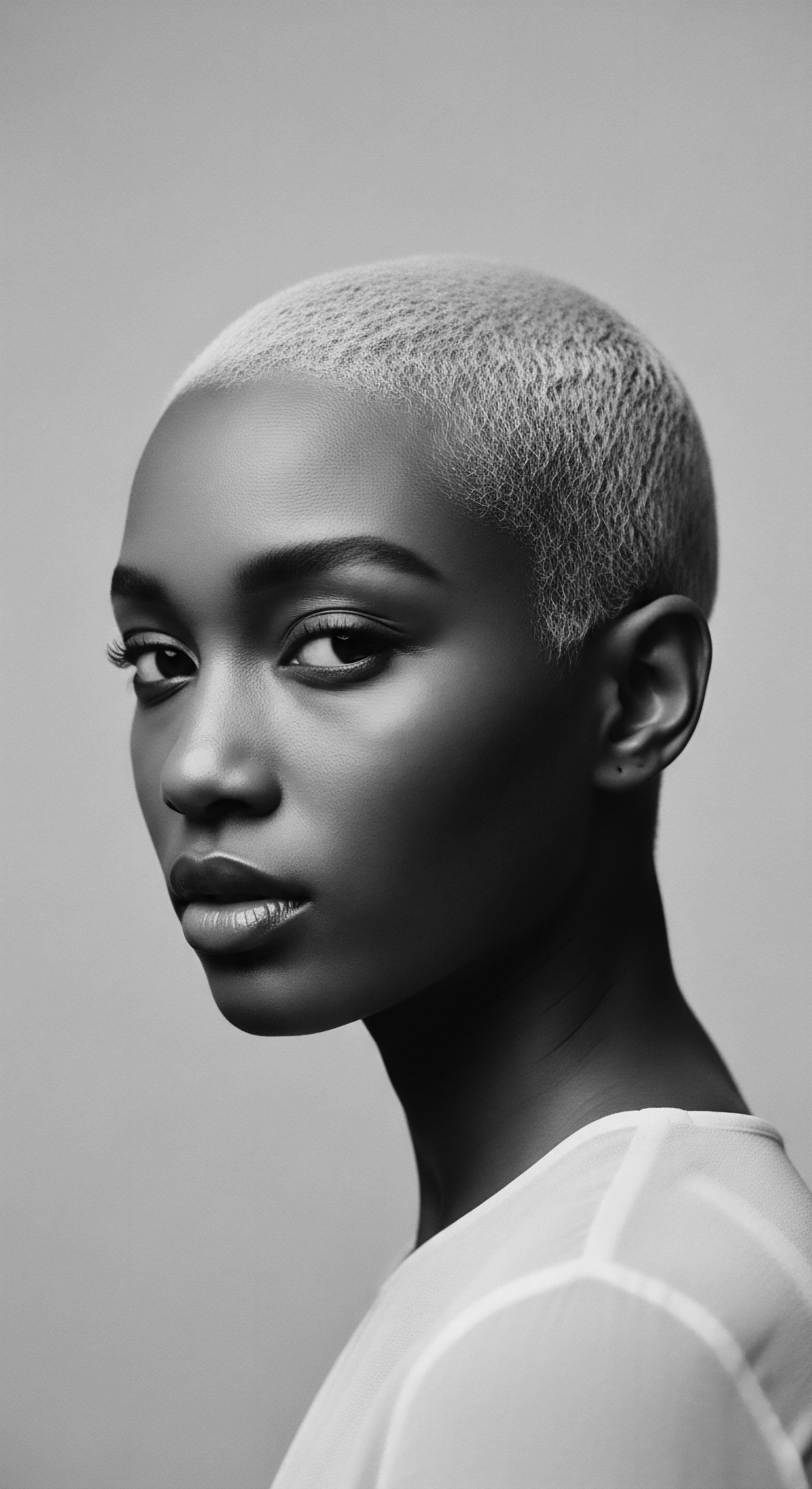
Fundamentals
The study of Black Hair Dermatology, often an overlooked yet critically important domain, delves into the unique physiological attributes of textured hair and the specific dermatological conditions that present within Black and mixed-race communities. It reaches beyond the surface-level observation of hair type to discern the underlying biological mechanisms and historical influences shaping scalp health and hair integrity. At its foundational core, this field recognizes hair as a living fiber and the scalp as a responsive ecosystem, both intrinsically linked to ancestral practices and contemporary care rituals. The designation “Black Hair Dermatology” speaks to a specialized area of medical and wellness understanding, providing a framework for identifying, addressing, and advocating for the distinct needs of hair that curls, coils, and kinks with such inherent beauty and resilience.
This definition extends to encompass the intricate relationship between hair structure, the scalp microbiome, environmental factors, and the myriad of styling practices that have evolved over generations. It considers the elemental biology of the hair follicle within diverse ancestral lineages, acknowledging that the very curvature of a strand influences its strength, moisture retention, and susceptibility to certain conditions. Understanding these foundational elements provides a clearer pathway for both preventative care and the treatment of dermatological issues that disproportionately affect individuals with textured hair.
Black Hair Dermatology represents a specialized understanding of textured hair’s unique biology and the dermatological conditions prevalent within Black and mixed-race communities, a field deeply rooted in ancestral care.
The very concept of hair care, within this context, is inseparable from cultural heritage. For centuries, ancestral communities across Africa developed sophisticated methods for tending to their hair, utilizing indigenous oils, botanical extracts, and intricate styling techniques that nourished the scalp and protected the delicate strands. These practices were not merely cosmetic; they were deeply interwoven with social structure, spiritual beliefs, and communal bonding.
Consider the historical significance of communal hair grooming sessions in many West African societies, where the act of braiding or twisting hair served as a cherished ritual for intergenerational knowledge transfer and the strengthening of community ties. This tradition of careful, deliberate hair tending laid a historical precedent for what today’s Black Hair Dermatology seeks to codify and understand.
From a purely biological standpoint, textured hair presents distinct characteristics compared to straight hair. Each strand of hair emerges from a follicle, and the shape of this follicle dictates the degree of curl. Afro-textured hair follicles tend to be elliptical, producing hair that coils tightly or forms zigzag patterns.
This structural uniqueness means the hair shaft is not uniformly round; instead, it possesses flat spots and curves that create natural points of weakness along its length. These natural bends and twists can make the hair more prone to dryness, as natural scalp oils struggle to travel down the coiled shaft, and more susceptible to mechanical damage from combing or styling.
The scalp itself, the fertile ground from which these magnificent strands emerge, also experiences unique challenges. The density of hair follicles, the natural oil production (sebum), and environmental exposures all play a role in scalp health. When we consider the cumulative impact of historical styling choices, often driven by societal pressures to conform to Eurocentric beauty standards, the importance of Black Hair Dermatology becomes strikingly clear.
The historical adoption of hot combs, for instance, a tool that uses direct heat to temporarily straighten hair, brought with it unintended consequences for scalp health. Repeated thermal exposure could lead to burns, inflammation, and eventual scarring, contributing to conditions like central centrifugal cicatricial alopecia (CCCA), which disproportionately affects Black women.
Understanding the fundamentals of Black Hair Dermatology, then, begins with honoring this dual legacy ❉ the inherent biological specificities of textured hair and the ancestral wisdom of its care, alongside the historical realities that have shaped contemporary practices. This field provides a vital bridge between scientific inquiry and the profound cultural meaning embedded within every curl and coil. It is a clarion call for a sensitive, informed approach to hair and scalp wellness that respects a rich historical narrative and actively seeks to mitigate the dermatological challenges faced by these communities.
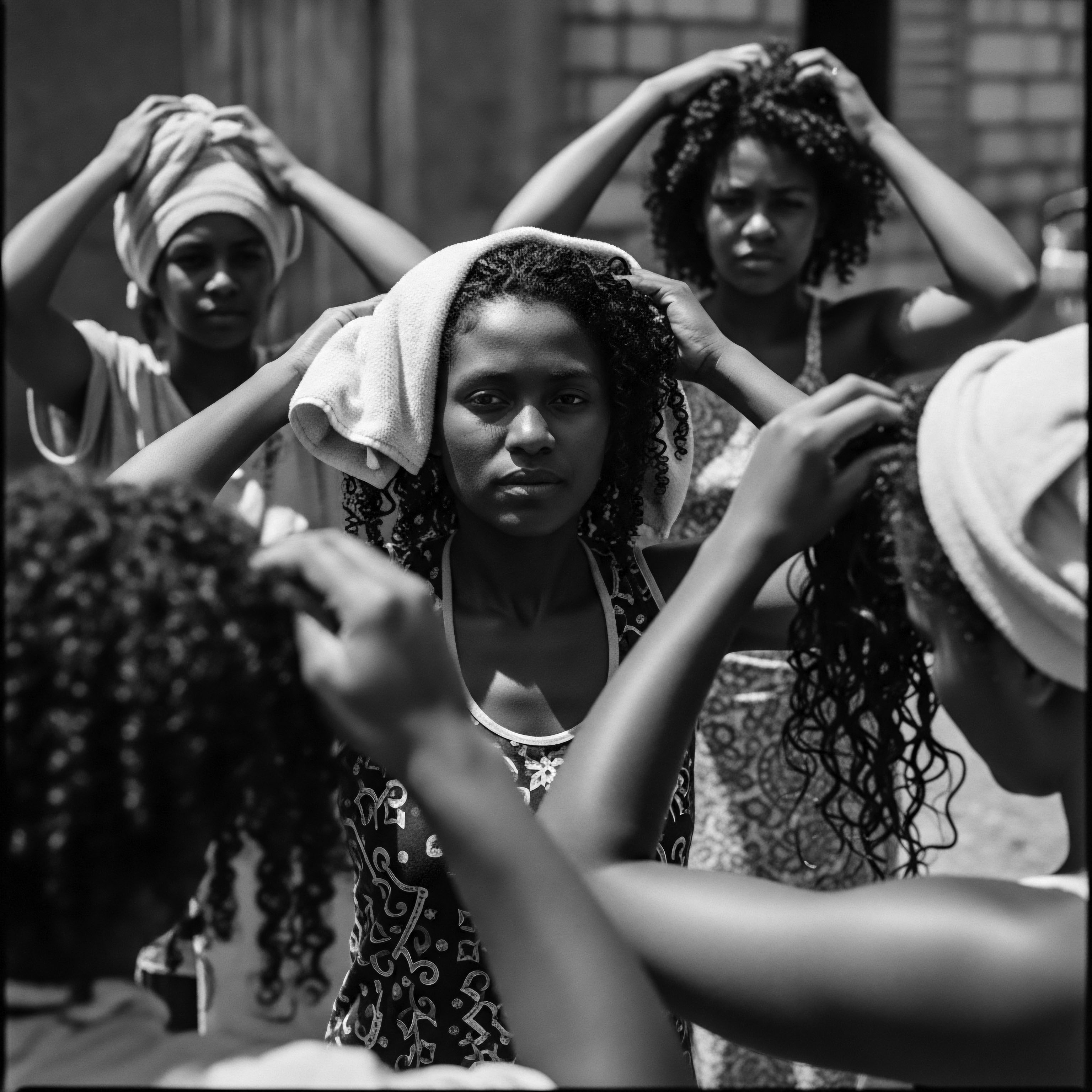
Intermediate
Moving beyond the foundational understanding, the intermediate comprehension of Black Hair Dermatology necessitates a deeper dive into the specific dermatological conditions that frequently present in individuals with textured hair, connecting these presentations to both inherent hair characteristics and the evolution of hair care practices across the diaspora. This level of understanding acknowledges that hair, for Black and mixed-race individuals, is not merely a biological appendage; it embodies a living history, a chronicle of resilience, adaptation, and profound cultural expression. The very integrity of textured hair, from its unique disulfide bonds to its elliptical follicular structure, lends itself to certain sensitivities and strengths, shaping its interaction with styling methods and environmental factors.
The unique helical shape of Black hair, characterized by its varying degrees of curl and coil, directly influences its interaction with moisture and external stressors. The multiple twists and turns along the hair shaft create numerous points where the outer protective layer, the cuticle, can lift, making the hair more porous and susceptible to moisture loss. This inherent tendency towards dryness often leads to a heightened need for moisturizing routines, a practice deeply ingrained in many ancestral hair care traditions that utilized rich plant-based oils and butters. The scientific elucidation of this structural reality underscores the veracity of long-standing communal wisdom concerning hydration.
A significant aspect of Black Hair Dermatology involves understanding the common dermatoses that specifically affect the scalp of individuals with textured hair. These conditions, while sometimes mirroring those seen in other populations, often manifest with distinct presentations or heightened prevalence due to hair structure and historical care practices.
- Traction Alopecia ❉ This form of hair loss results from prolonged or repetitive tension on the hair follicles, frequently observed along the hairline and temples. Historical hairstyles, such as tightly pulled braids, cornrows, or ponytails, particularly when augmented with heavy extensions, can exert significant mechanical stress. While these styles offer practicality and cultural significance, understanding proper tension distribution and taking breaks from high-tension styles becomes paramount for preventing this condition. The ancestral practice of looser braiding, or styling that allowed for release, holds a valuable lesson in this regard.
- Central Centrifugal Cicatricial Alopecia (CCCA) ❉ Representing a primary scarring alopecia, CCCA begins at the crown of the scalp and spreads outwards. Historically, it was sometimes referred to as “hot comb alopecia,” attributing its cause to thermal and chemical trauma from hair straightening practices. While contemporary understanding points towards a genetic predisposition involving missense mutations, certain hair styling practices, including the use of chemical relaxers and high-tension styles, may exacerbate the condition or trigger its onset. The journey from blaming external practices to uncovering genetic links exemplifies the evolving scientific understanding within Black Hair Dermatology.
- Acquired Trichorrhexis Nodosa (ATN) ❉ This condition involves the formation of nodes along the hair shaft where the cuticle is damaged, leading to breakage. It is often a consequence of repeated mechanical stress, excessive heat styling, or chemical processing, such as perming and relaxing. The long historical relationship between Black women and chemical hair straightening, driven by societal pressures, created a challenging landscape for hair integrity.
The historical evolution of hair care practices within Black communities, particularly since enslavement, has deeply shaped the dermatological landscape. Stripped of ancestral tools and traditions, and forced into environments that pathologized their natural hair, enslaved Africans began to adopt methods to alter their hair texture to conform to Eurocentric beauty ideals. Early methods, often harsh, involved applying substances like lye, butter, or animal fats, coupled with heated tools, to achieve a straightened appearance. This desperate quest for social and economic acceptance, even survival, introduced damaging practices that set precedents for later dermatological challenges.
The complexities of Black Hair Dermatology are revealed through the interplay of textured hair’s biological specificities, common dermatological conditions like traction alopecia and CCCA, and the historical evolution of hair care practices shaped by societal pressures.
The advent of commercial chemical relaxers in the early 20th century, building upon these historical straightening efforts, marked a significant turning point. These products, designed to permanently alter the hair’s protein structure, initially contained strong alkaline agents like sodium hydroxide (lye). While offering a new level of straightening, they also introduced the risk of severe scalp burns and chemical irritation, contributing to the development of scarring alopecia over time. Even later formulations, marketed as “no-lye” relaxers, still contain alkaline chemicals, and studies confirm their potential for damage and corrosion to the skin.
A significant observation in this field is the health disparity in exposure to hazardous chemicals. Research has indicated that personal care products marketed to Black women, especially hair relaxers and dyes, often contain endocrine-disrupting chemicals. These chemicals have been linked to elevated risks of various diseases, including breast and uterine cancer, with the association being more pronounced for Black women. This reality underscores the need for a culturally competent Black Hair Dermatology that advocates for safer product formulations and raises awareness within communities about these hidden health risks.
The intermediate understanding, therefore, integrates scientific knowledge of hair and scalp anatomy with a nuanced awareness of historical socio-cultural dynamics. It recognizes that hair health for Black and mixed-race individuals is not solely a matter of biology, but also a narrative woven with threads of heritage, systemic oppression, innovation, and self-expression. This broader perspective allows practitioners and individuals alike to approach hair care with greater empathy, knowledge, and a commitment to preserving the holistic wellbeing of scalp and strand.
Understanding the specific needs of textured hair also requires acknowledging the importance of appropriate washing frequency and moisturizing regimens. Afro-textured hair, due to its coiling nature, is less prone to becoming oily quickly compared to straight hair, which means that daily washing may not be ideal. Excessive washing can strip the hair of its natural oils, further exacerbating dryness and potentially leading to breakage. Instead, a focus on cleansing methods that retain moisture, such as co-washing (washing with conditioner) or using moisturizing shampoos, aligns more effectively with the hair’s inherent needs.
The transition to natural hair, a powerful movement observed in recent decades, has also brought its own set of dermatological considerations. While embracing natural texture often reduces exposure to harsh chemicals and heat, it also requires an understanding of how to manage tangles, maintain moisture, and prevent breakage during detangling. Black Hair Dermatology plays a crucial role in providing guidance on these practices, ensuring that the return to ancestral styles is supported by scientifically sound, health-conscious approaches. The expertise at this intermediate level equips one to appreciate the layered complexities, recognizing that hair health is a continuous dialogue between inherited biology and lived experience.

Academic
Black Hair Dermatology, at its most academic and comprehensive conceptualization, represents a specialized and critical sub-discipline within dermatology, meticulously dedicated to the profound scientific and socio-historical examination of hair and scalp conditions uniquely prevalent in individuals of Black and mixed-race African descent. Its meaning extends far beyond mere clinical diagnosis; it encompasses a rigorous inquiry into the genetic underpinnings of textured hair, the biomechanical properties that dictate its behavior, and the complex interplay of cultural practices, systemic health disparities, and historical influences that have shaped its dermatological landscape. This field demands an intellectual dexterity that integrates molecular biology, clinical epidemiology, cultural anthropology, and historical sociology to delineate its full scope and impact. It is a clarion call for an equity-focused approach to hair health, recognizing that the experiences of Black communities have often been marginalized in broader dermatological discourse.
The elucidation of Black Hair Dermatology requires a detailed analysis of the inherent characteristics of highly coiled or kinked hair, which possesses a unique elliptical cross-section and an irregular, often flattened shape along its shaft. This morphological singularity influences the mechanical strength of the hair fiber, making it more susceptible to breakage at its numerous points of curvature. Furthermore, the inherent curl pattern impedes the natural downward migration of sebum from the scalp, contributing to the characteristic dryness observed in Afro-textured hair.
This dryness renders the hair more vulnerable to external insults and mechanical manipulation. The significance of this understanding lies in its ability to inform targeted preventative strategies and therapeutic interventions that transcend generic dermatological approaches, moving towards culturally competent care that acknowledges the specificity of inherited hair traits.
Academic Black Hair Dermatology offers a rigorous, interdisciplinary examination of textured hair’s biological specificities, its dermatological challenges, and the profound socio-historical forces that have defined its health journey.
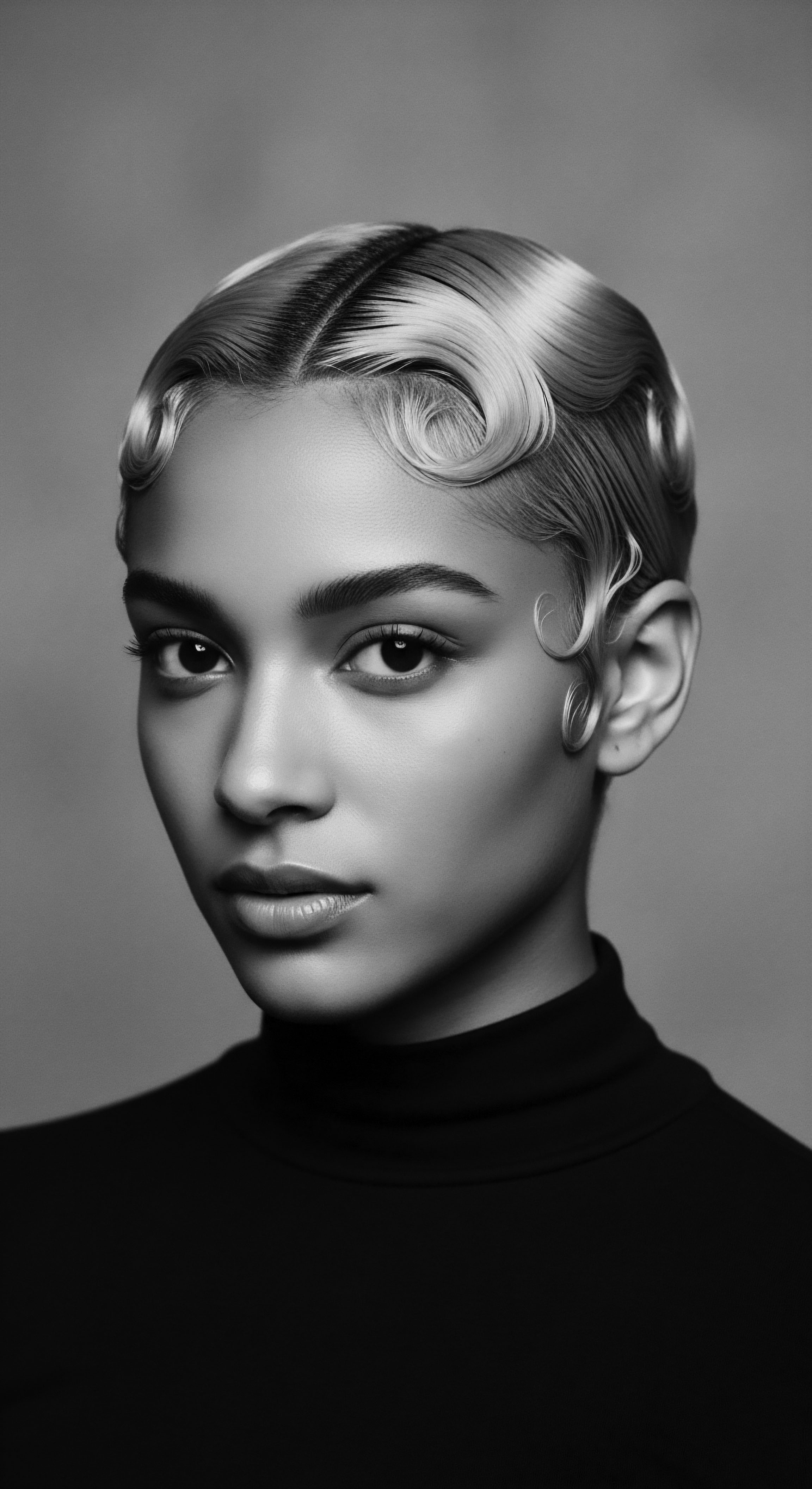
Historical Trajectories and Health Disparities
A particularly illuminating area of inquiry within academic Black Hair Dermatology involves the long-term dermatological consequences of historical hair alteration practices, specifically the pervasive use of chemical hair relaxers. The history of chemical straightening products for Black hair is a narrative intertwined with centuries of racial oppression and the persistent pressure to conform to Eurocentric beauty standards. Post-emancipation, the aspiration for straight hair, often seen as a prerequisite for social mobility and economic opportunity, led to the widespread adoption of methods like hot combs and, subsequently, chemical relaxers. This cultural narrative created a landscape where the pursuit of beauty, or more accurately, acceptance, often came at a significant dermatological cost.
Garrett Augustus Morgan’s accidental discovery in 1909, while seeking a solution to reduce friction in sewing machines, led to the first documented hair straightening cream. This early product, and subsequent commercial relaxers that gained wide use in the 1950s (such as Ultra Sheen by Johnson and his wife Joan, using sodium hydroxide as the active ingredient), chemically altered the hair’s structure. These lye-based relaxers, characterized by their extremely high alkaline pH (often exceeding 11.5, reaching up to 13.8 in some tested products), achieved straightening by disrupting the hair’s disulfide bonds. This chemical process, while effective in altering texture, inherently carried profound risks for the scalp and hair.
The deleterious effects of these products were not theoretical; they were lived realities. Complaints of scalp burns and hair damage from lye-based relaxers were so prevalent that the Federal Trade Commission demanded warning labels on Johnson’s products in 1975. Despite later developments of “no-lye” relaxers using calcium hydroxide, research has consistently shown that these too possess corrosive pH levels, posing similar risks of chemical burns and scalp irritation.
A concerning statistical reality underscores the profound health disparities linked to these historical practices. Black consumers, historically, spend disproportionately on hair care products. One study indicates that Black consumers spend nine times more on hair care products compared to other ethnic groups. This significant purchasing power has unfortunately been exploited by hair care companies through targeted marketing, often displaying advertisements with terms like “straight,” “smooth,” and “silky” alongside images of women with straight hair, thereby perpetuating a negative perception of naturally coiled hair.
The long-term consequences of this systemic exposure to potentially harmful chemicals are now being rigorously investigated within academic dermatology and public health. Recent epidemiological research, particularly the landmark Sister Study published in the Journal of the National Cancer Institute in October 2022, revealed a concerning association ❉ individuals who frequently used chemical hair-straightening products, a majority of whom were Black women, were found to be two and a half times as likely to develop uterine cancer. Other studies have also shown associations between frequent relaxer use and ovarian cancer. Furthermore, investigations have linked relaxer use, especially before age 12 and for longer than 10 years, to larger and more aggressive breast tumors.
These findings compel academic Black Hair Dermatology to address the complex layers of public health, environmental justice, and socio-cultural pressures. The issue extends beyond individual choice; it implicates systemic marketing practices and historical beauty ideals that have driven the use of products with documented health risks. A 2024 Harvard T.H.
Chan School of Public Health study found that hair products sold in Boston neighborhoods with higher percentages of people of color and lower-income residents tended to be more toxic than those sold in more affluent, predominantly white neighborhoods. This research highlights an alarming environmental injustice, where hazardous chemicals in personal care products disproportionately impact marginalized communities.
The interconnectedness of these factors forms the very substance of academic Black Hair Dermatology. It seeks to understand not only the direct dermatological injuries (like chemical burns, hair breakage, and specific alopecias such as CCCA and traction alopecia) but also the broader implications for reproductive health and cancer risk that have emerged from the prolonged use of certain chemical hair products. The field is actively engaged in identifying endocrine-disrupting chemicals like parabens and phthalates found in relaxers and other hair products marketed to Black women, advocating for stricter regulations and safer alternatives.
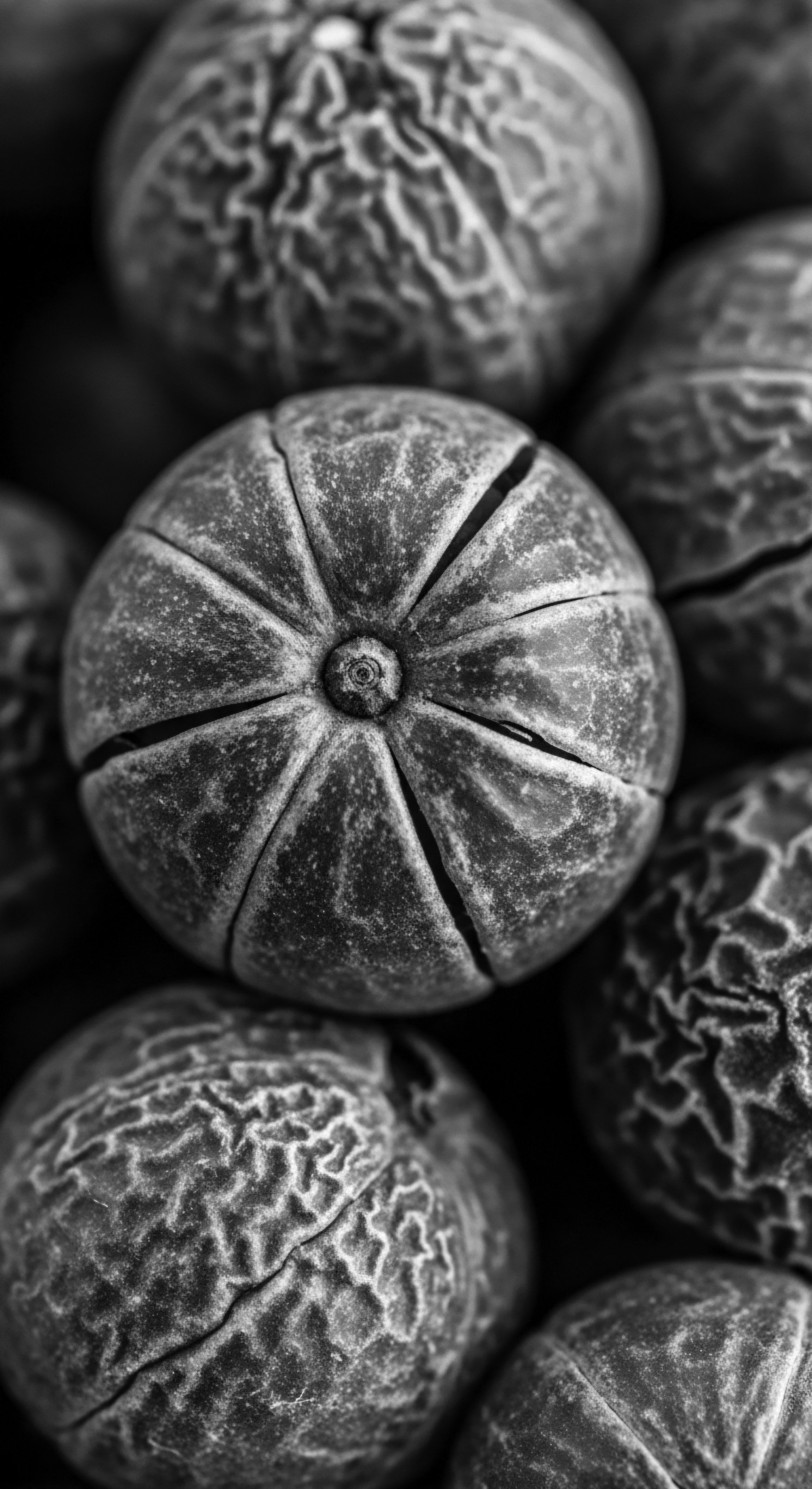
Clinical and Research Frontiers
The field of Black Hair Dermatology also grapples with the diagnostic challenges presented by certain scalp conditions. For instance, central centrifugal cicatricial alopecia (CCCA), while now understood to have a genetic basis, can be exacerbated by tension and chemical trauma. Distinguishing CCCA from other forms of alopecia, such as traction alopecia, requires meticulous clinical examination, often involving trichoscopy and scalp biopsy, to ensure accurate diagnosis and appropriate management. The phenotypic presentation of inflammatory conditions can also vary on pigmented skin, necessitating a specialized diagnostic lens.
Research endeavors within this domain extend to exploring novel therapeutic strategies for hair and scalp disorders that disproportionately affect Black patients. While conventional treatments for hair loss might offer some benefit if conditions are caught early, specific treatments for scarring alopecias like CCCA remain an active area of investigation. Emerging approaches, such as stem cell secretosome therapy, show promise in regenerating hair follicles and minimizing scarring by targeting genetic misprogramming. This dedication to innovative, targeted solutions underscores the field’s commitment to improving outcomes for a historically underserved population.
The academic pursuit in Black Hair Dermatology also entails developing culturally competent dermatological education. Many Black patients report a perception that dermatologists lack sufficient knowledge regarding Black hair and its specific care. This gap in understanding can erode trust and lead to suboptimal care.
Therefore, integrating comprehensive historical, cultural, and scientific knowledge of Black hair into medical curricula is a critical imperative for the field’s continued advancement. This includes acknowledging the nuanced perspectives of Black women who, despite the health risks, may continue to use certain products due to deeply ingrained societal pressures related to professionalism and beauty.
A significant area of focus within this academic realm involves understanding the intricate relationship between hair products and the body’s endocrine system. The detection of higher levels of parabens and phthalates in the bodies of Black women and children compared to their Caucasian counterparts indicates a systemic exposure disparity. These endocrine-disrupting chemicals have been linked to reproductive health issues, including early puberty. This profound recognition transforms Black Hair Dermatology into a field deeply invested in environmental health justice, advocating for a holistic approach to wellness that extends beyond the scalp to encompass systemic health outcomes.
The academic meaning of Black Hair Dermatology thus consolidates a rigorous, interdisciplinary understanding of the textured hair fiber’s unique biology, the specific dermatological conditions it is prone to, and the profound historical and socio-cultural forces—including systemic racism, beauty standards, and targeted marketing—that have shaped the hair health experiences of Black communities. It is a field driven by a commitment to rectifying health disparities, advancing scientific knowledge, and honoring the enduring legacy of textured hair with the highest level of scholarly precision and cultural humility.
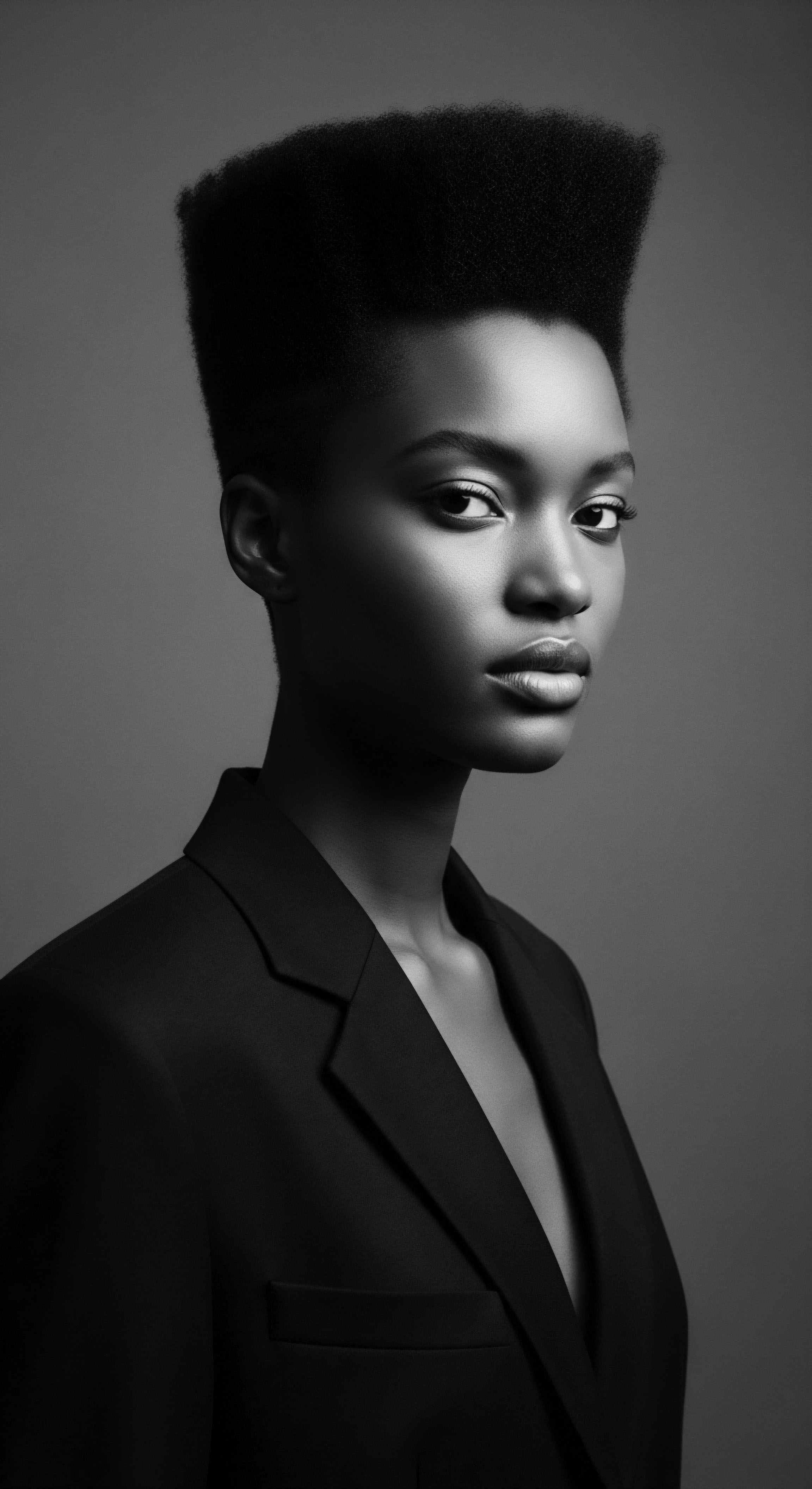
Reflection on the Heritage of Black Hair Dermatology
The path we have traversed through the multifaceted landscape of Black Hair Dermatology leads us to a profound understanding ❉ hair, for Black and mixed-race communities, is more than simply protein strands emerging from the scalp. It represents a living chronicle, a vibrant tapestry woven with threads of ancestral wisdom, resilience, innovation, and an unwavering spirit of identity. The insights gathered from this journey, from the elemental biology of a curl to the complex societal pressures that shaped its care, reveal an enduring heritage that continues to redefine beauty and wellness on its own terms.
Reflecting on the heritage of Black Hair Dermatology invites a gentle acknowledgment of the triumphs and tribulations that have shaped hair journeys across generations. From the elaborate styling techniques of pre-colonial Africa, where hair communicated status, identity, and spiritual connection, to the enforced adaptations and subsequent innovations born of resilience in the diaspora, each strand holds a story. The historical pressures to conform, the arduous quest for “good hair,” and the resulting dermatological challenges have been a difficult chapter, yet they have also spurred profound acts of self-acceptance and cultural reclamation.
The contemporary movement towards embracing natural hair textures is a powerful testament to this enduring heritage. It is a reclaiming of ancestral beauty, a quiet revolution of coils and kinks that celebrates authenticity and self-love. This collective journey back to the source, often accompanied by a deeper inquiry into the science of textured hair, signifies a hopeful shift.
It allows for the validation of traditional moisturizing practices through modern dermatological understanding, bridging ancient wisdom with contemporary scientific insight. The wisdom of previous generations, who intuitively understood the need for moisture and protective styling, now finds its echo in evidence-based recommendations.
The evolving understanding of Black Hair Dermatology also carries with it a responsibility ❉ to advocate for safer product formulations, to dismantle discriminatory beauty standards, and to foster environments where all textured hair is celebrated for its inherent beauty and uniqueness. This ongoing dialogue between history, science, and lived experience forms the very “Soul of a Strand”—a continuous conversation about heritage, health, and liberation. The profound beauty of Black hair, in all its varied expressions, stands as a testament to an unbreakable spirit, forever echoing the whispers of ancestors and shaping the vibrant futures of generations yet to come. The future of this field lies in its continued dedication to cultural humility, scientific rigor, and a heartfelt commitment to the holistic wellbeing of textured hair and its communities, forever honoring the deep roots from which it springs.
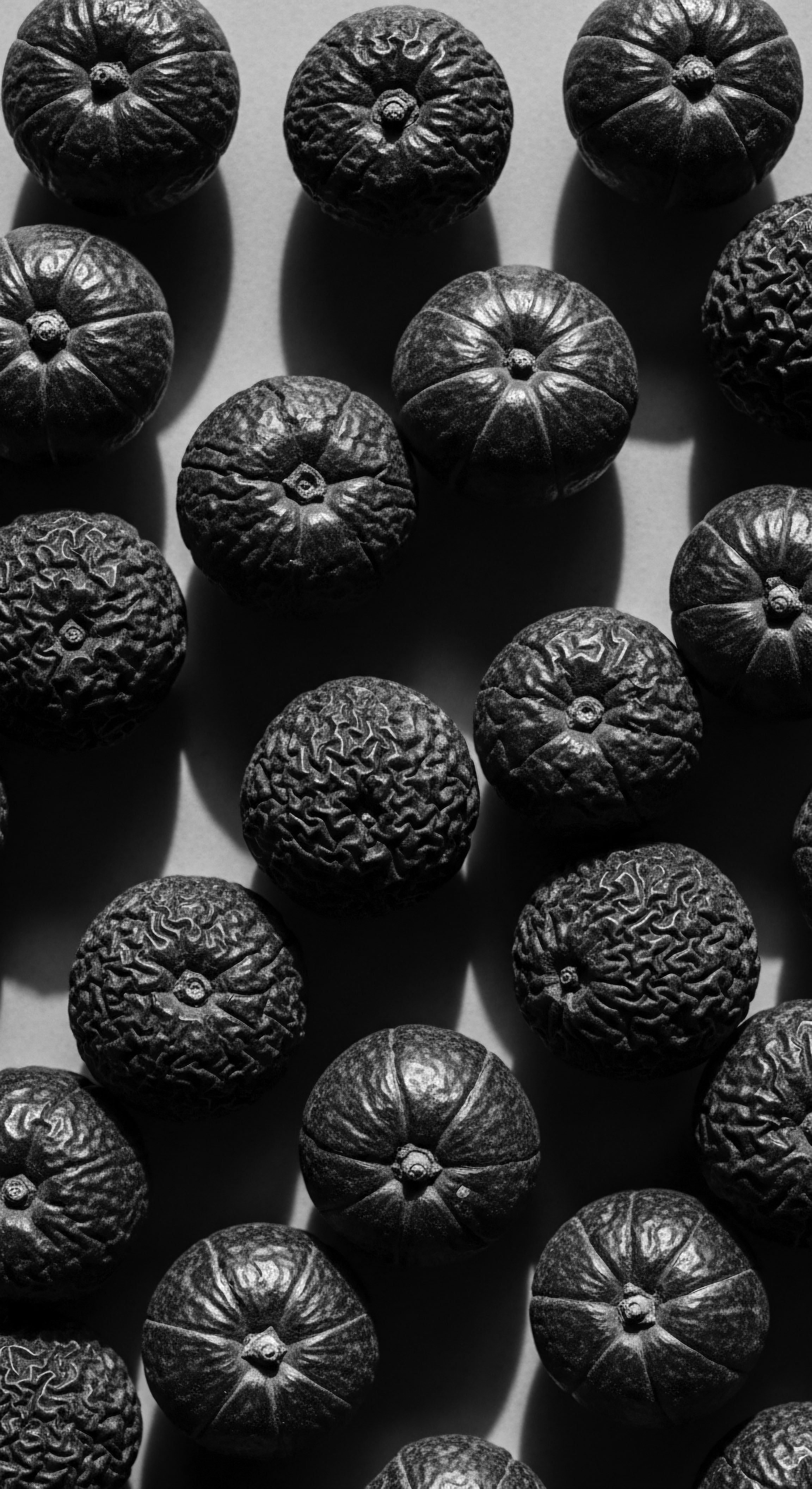
References
- Abel, T. L. (2018). The Cultural History of Hair in the Age of Empire. Bloomsbury Academic.
- Banks, I. (2000). Hair Matters ❉ Beauty, Power, and Black Women’s Consciousness. New York University Press.
- Johnson, D. & Bankhead, T. (2014). Black Women’s Natural Hair ❉ An Exploration of their Subjective Experiences in the Workplace and Social Environments. Journal of Black Studies.
- Khumalo, N. P. et al. (2010). Hair Care Practices in African-American Women. Dermatologic Clinics.
- Llanos, A. A. et al. (2022). Use of Hair Products and the Risk of Uterine Cancer. Journal of the National Cancer Institute.
- Patton, T. O. (2006). “Hey, Girl, Am I Justified?” ❉ Hair, Identity, and Black Women’s Search for Authenticity. Journal of Black Studies.
- Sishi, N. et al. (2020). Hair relaxers tested by UCT lab found to be corrosive to skin. South African Medical Journal.
- Villarosa, L. (2024). The Story of Hair Relaxers and the Health Problems They May Have Caused. The New York Times.
- Walker, A. (2001). On Her Own Ground ❉ The Life and Times of Madam C. J. Walker. Scribner.
- White, S. & White, G. (1995). Slave Hair and African American Culture in the Eighteenth and Nineteenth Centuries. The Journal of Southern History.
